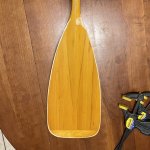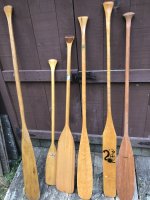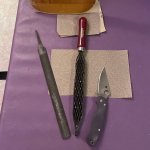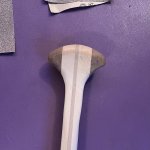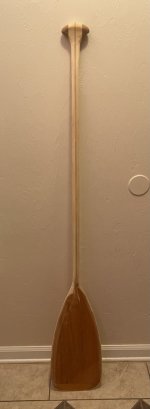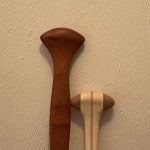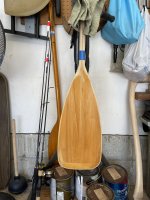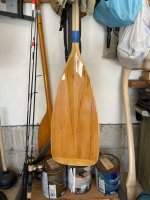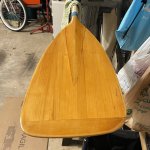So I have 3 Aviron Clement paddles. They have huge blades, and well, I don’t enjoy using them. They might be worth something, but getting them sold and shipped is a nuisance. I’d really like a Grey Owl Fleetwood or similar, so… I’m gonna make one. Or similar.
The subject paddle is a 58” with an ~36” shaft. The shaft length is a little long for sitting in my Prism, but kneeling in my empty Polaris it’s really probably about right. My favorite bent shaft is a 54” Grey Owl, so I traced the blade pattern onto the Clement. The shaft is too thick for my taste, but as a softwood it probably has to be. I *may* trim the width up some. As for the handle it’s too thick in all dimensions. My favorite grip is the one on my Bruce Smith ottertail, so I’m going to try to make this one more like that one… a lofty goal for sure, but there’s plenty of meat on this paddle.
The donor. I’ll try to preserve the sticker:
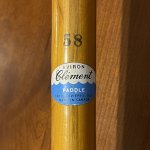
The pattern:
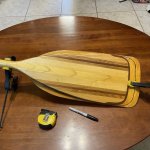
Now I can visualize it. I stretched the blade tracing a bit to make sure I kept some of the tip reinforcing:
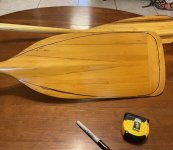
The grip, I hope:

I think I’ve got enough good belts for the belt sander. Then a thorough hand-sanding and fresh coat of varnish for the blade. Given the wood in this paddle, should I use a an oil finish on the shaft, or do I need to stick to varnish? I much prefer the oil finish of my Smith.
The subject paddle is a 58” with an ~36” shaft. The shaft length is a little long for sitting in my Prism, but kneeling in my empty Polaris it’s really probably about right. My favorite bent shaft is a 54” Grey Owl, so I traced the blade pattern onto the Clement. The shaft is too thick for my taste, but as a softwood it probably has to be. I *may* trim the width up some. As for the handle it’s too thick in all dimensions. My favorite grip is the one on my Bruce Smith ottertail, so I’m going to try to make this one more like that one… a lofty goal for sure, but there’s plenty of meat on this paddle.
The donor. I’ll try to preserve the sticker:

The pattern:

Now I can visualize it. I stretched the blade tracing a bit to make sure I kept some of the tip reinforcing:

The grip, I hope:

I think I’ve got enough good belts for the belt sander. Then a thorough hand-sanding and fresh coat of varnish for the blade. Given the wood in this paddle, should I use a an oil finish on the shaft, or do I need to stick to varnish? I much prefer the oil finish of my Smith.
Last edited:

